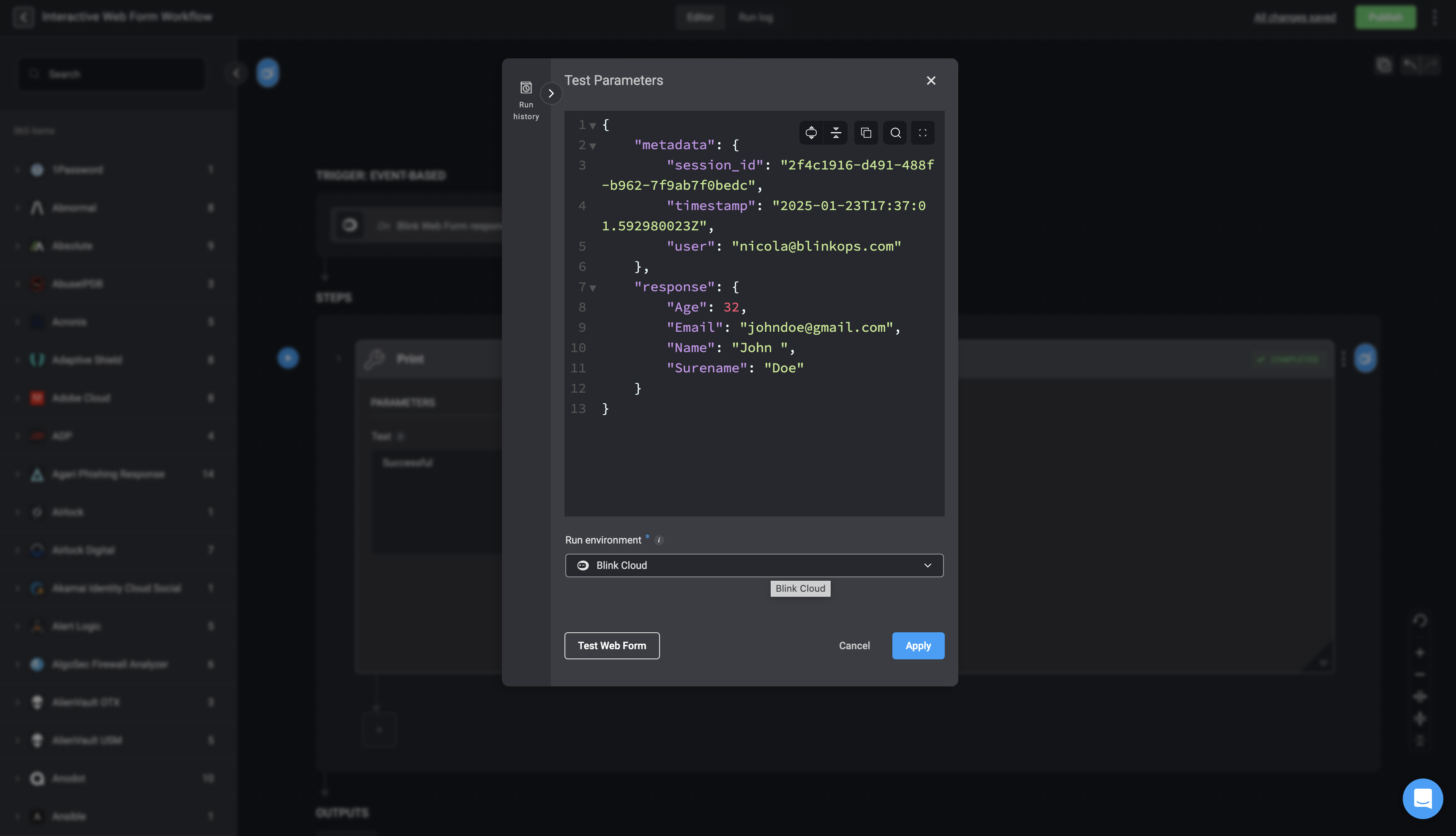Supported Web Form Flow Types
The Web Form Event-Based Trigger is designed to support two distinct flow types- Single Step: Creates a static and non-interactive web forms.
- New Interactive: Creates a web form that can be used in an interactive web form session, initiated either by a previous web form step or a Web Form Trigger.
Configure a Single Step Web Form Trigger
Interactive Web Form Trigger- Use Case Example
Interactive Web Form Trigger- Use Case Example
Workflow Overview: Web Form Reset User Password**
Purpose: This workflow automates the process of resetting a user’s password in response to a Blink Web Form submission. It includes built-in safeguards to ensure that no action is taken without explicit user confirmation. Once confirmed, it generates a new password, updates the user’s credentials through Microsoft Entra ID, and communicates the result.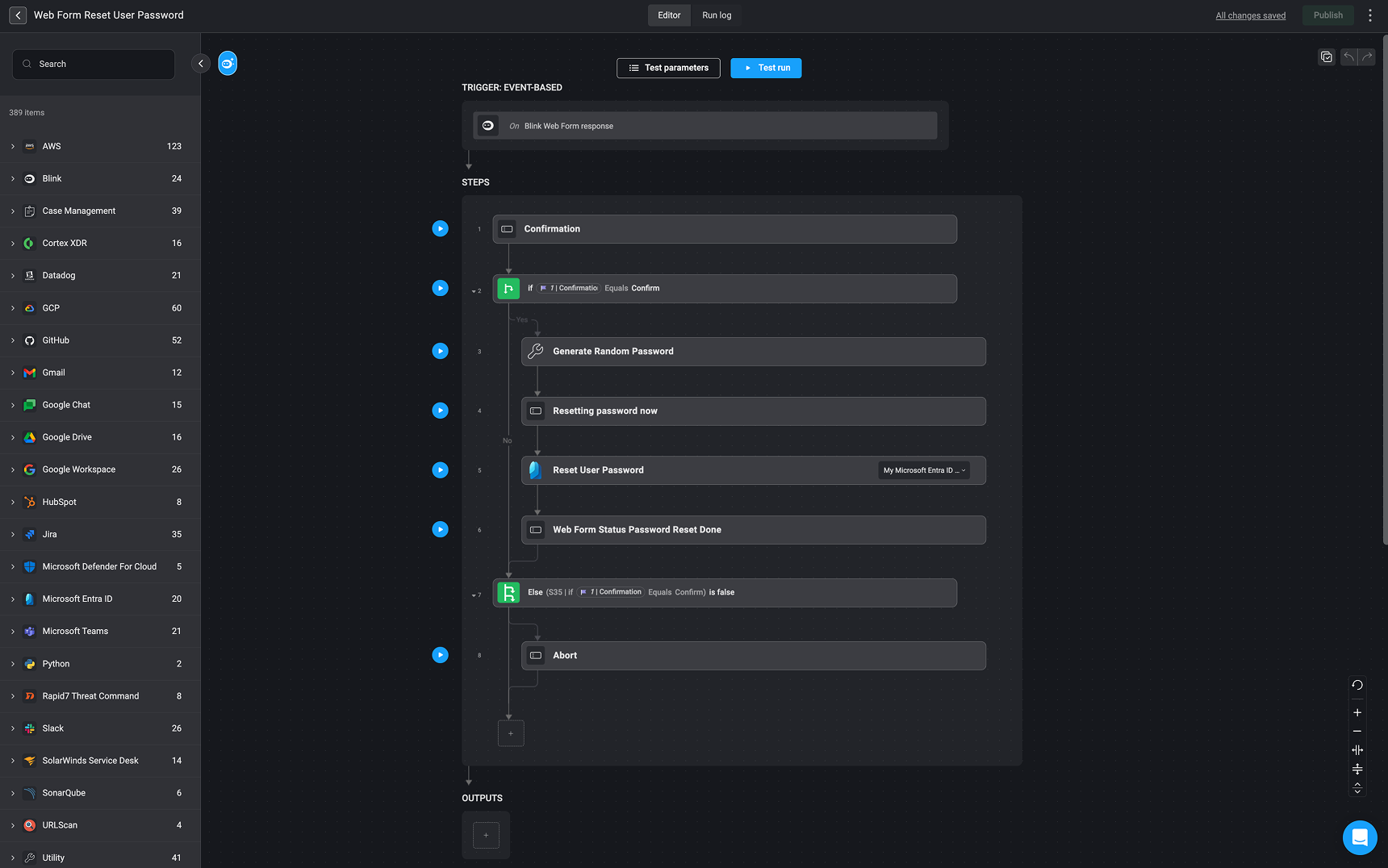
Workflow Logic and Steps
Trigger- Type: Event-Based Trigger
- Event: Blink Web Form response
- Web form flow type: New Interactive
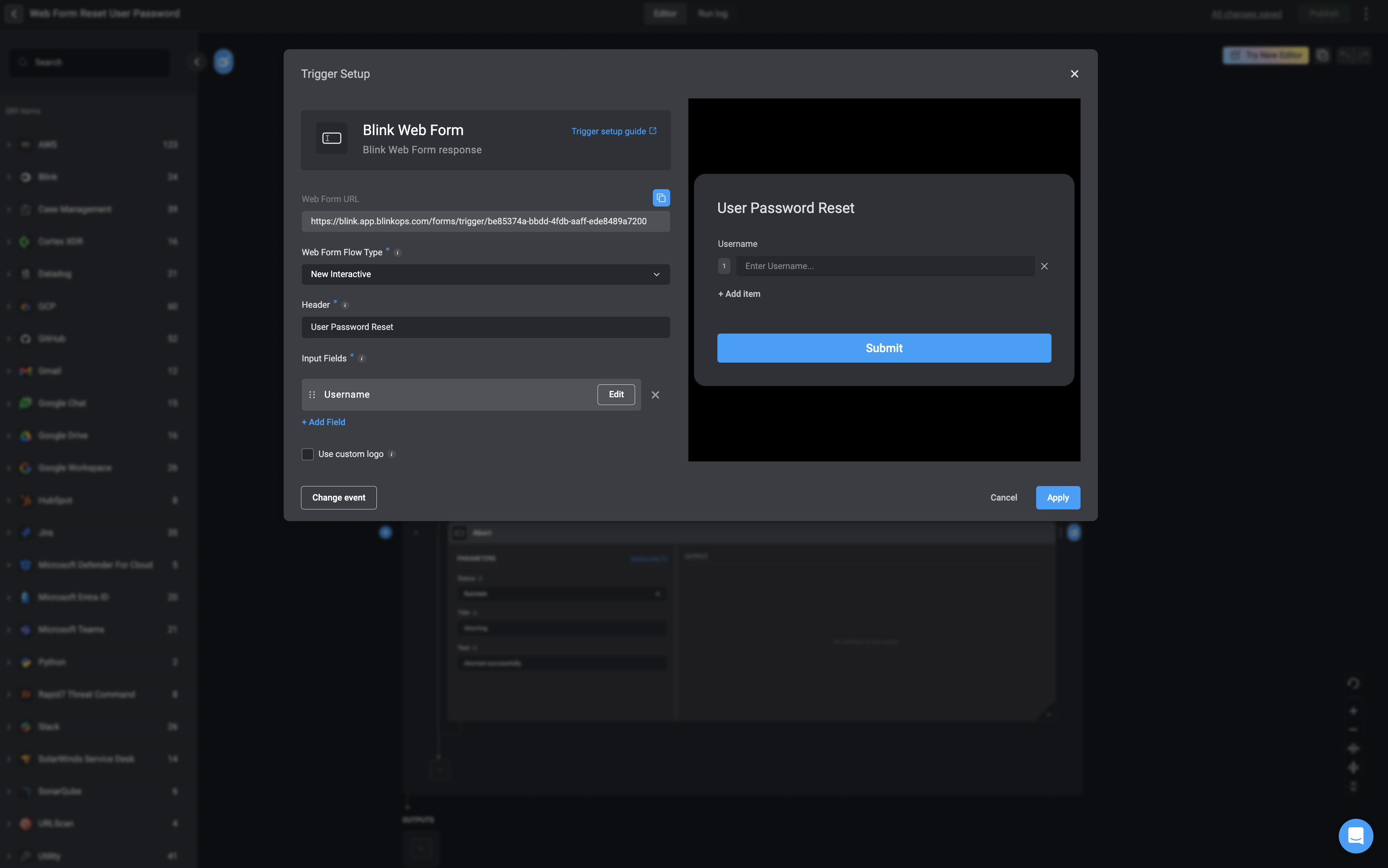
- If the user selected “Confirm”, the workflow proceeds with the password reset process.
- If not, the workflow exits without taking any further action.
- Step 3: Generate Random Password: A secure, randomly generated password is created for the user. This will be used to update their credentials.
- Step 4: Resetting Password Now: This step logs or communicates that the password reset process has started. This may involve sending a notification or writing a message to a log.
- Step 5: Reset User Password: Uses the Microsoft Entra ID integration to reset the user’s password to the one generated in Step 3. The user is identified using their Entra ID value collected earlier or from the form submission.
- Step 6: Web Form Status - Password Reset Done: Provides feedback via the web form or notification that the password reset has been successfully completed.
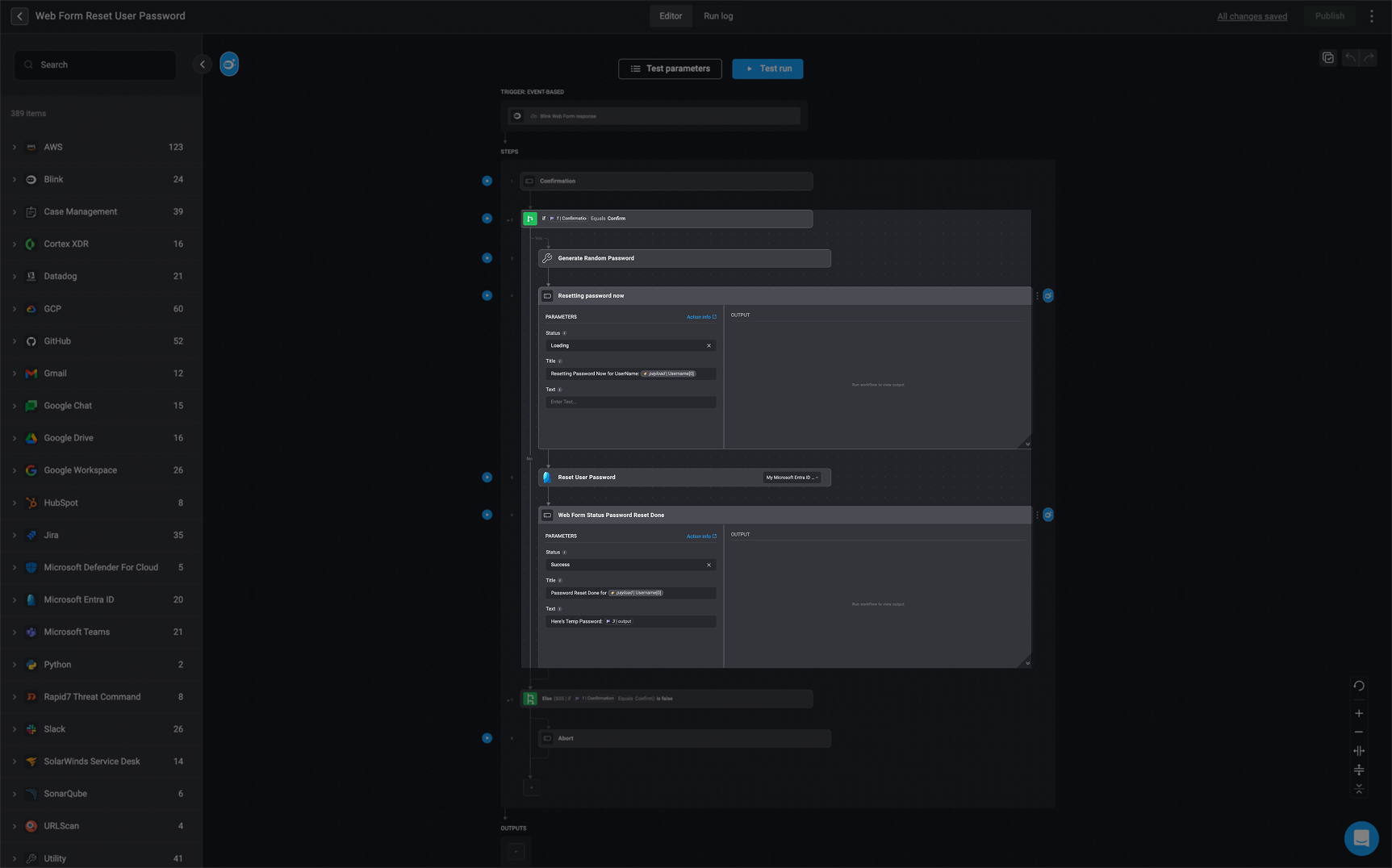
- Step 7: Else Condition: Handles all cases where the user’s confirmation response is not “Confirm”.
- Step 8: Abort: The workflow stops, ensuring that no changes are made unless explicit confirmation was provided.
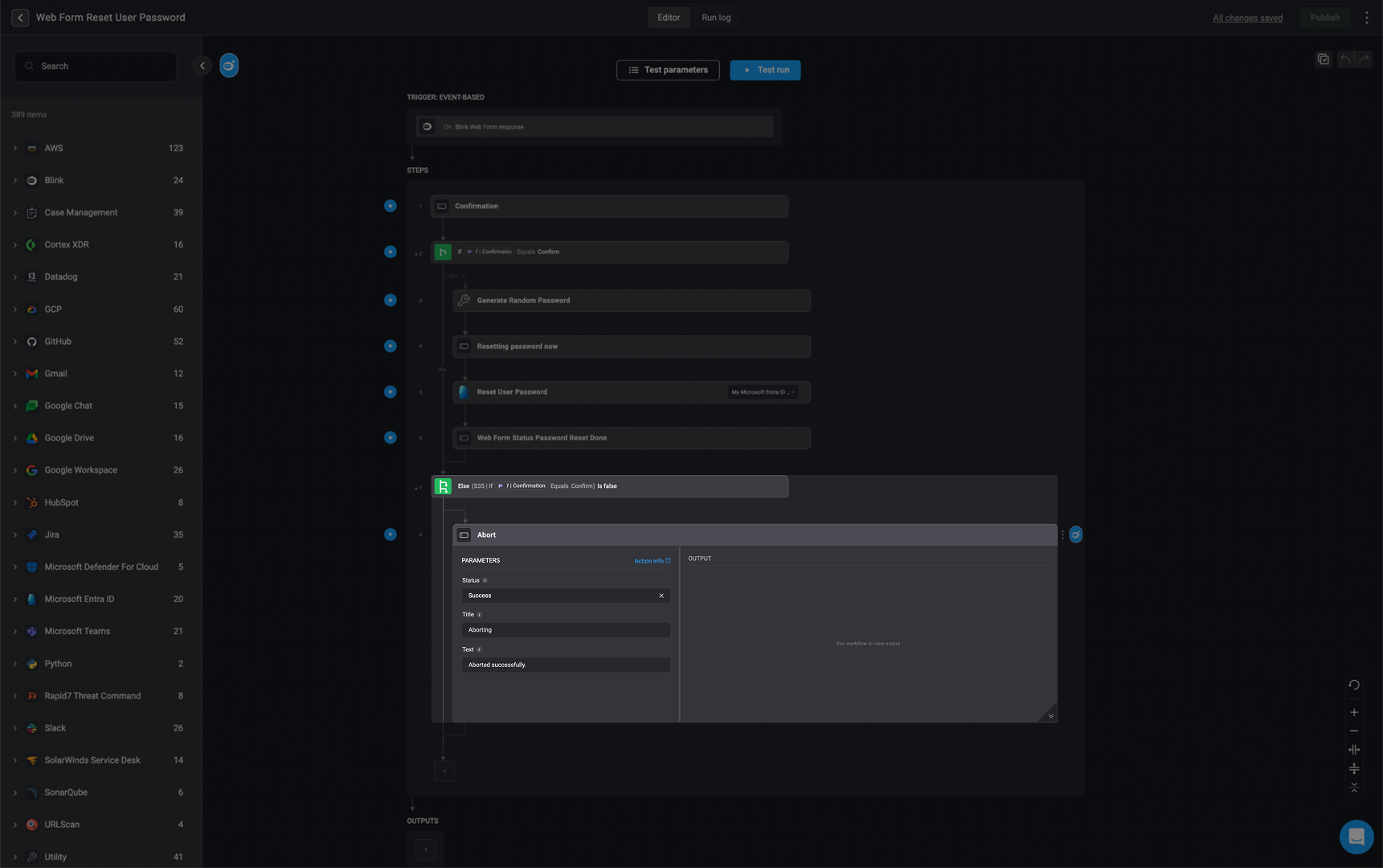
Create a new workflow. Choose the Event-based Workflow trigger type
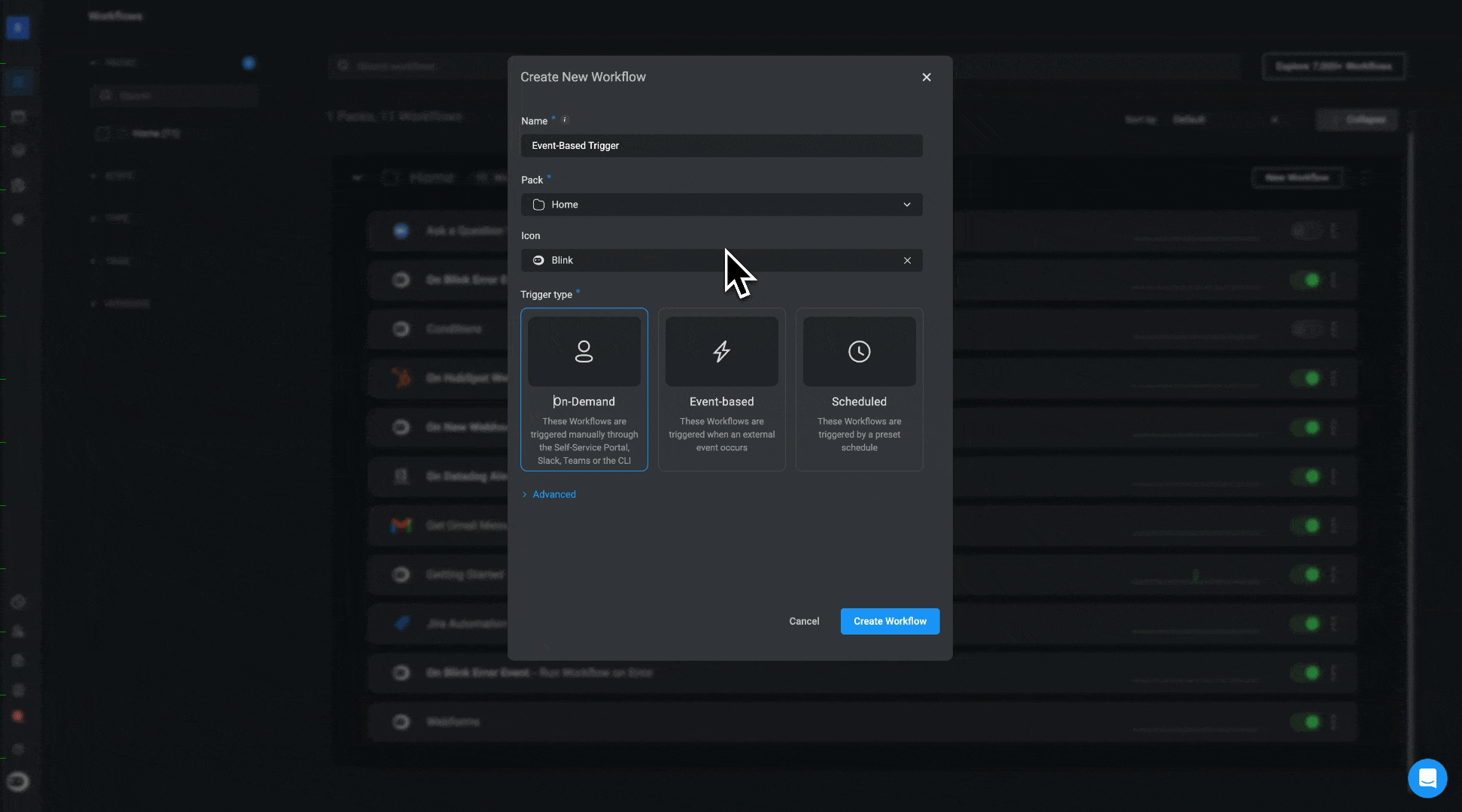
Configure the Event-Based Workflow
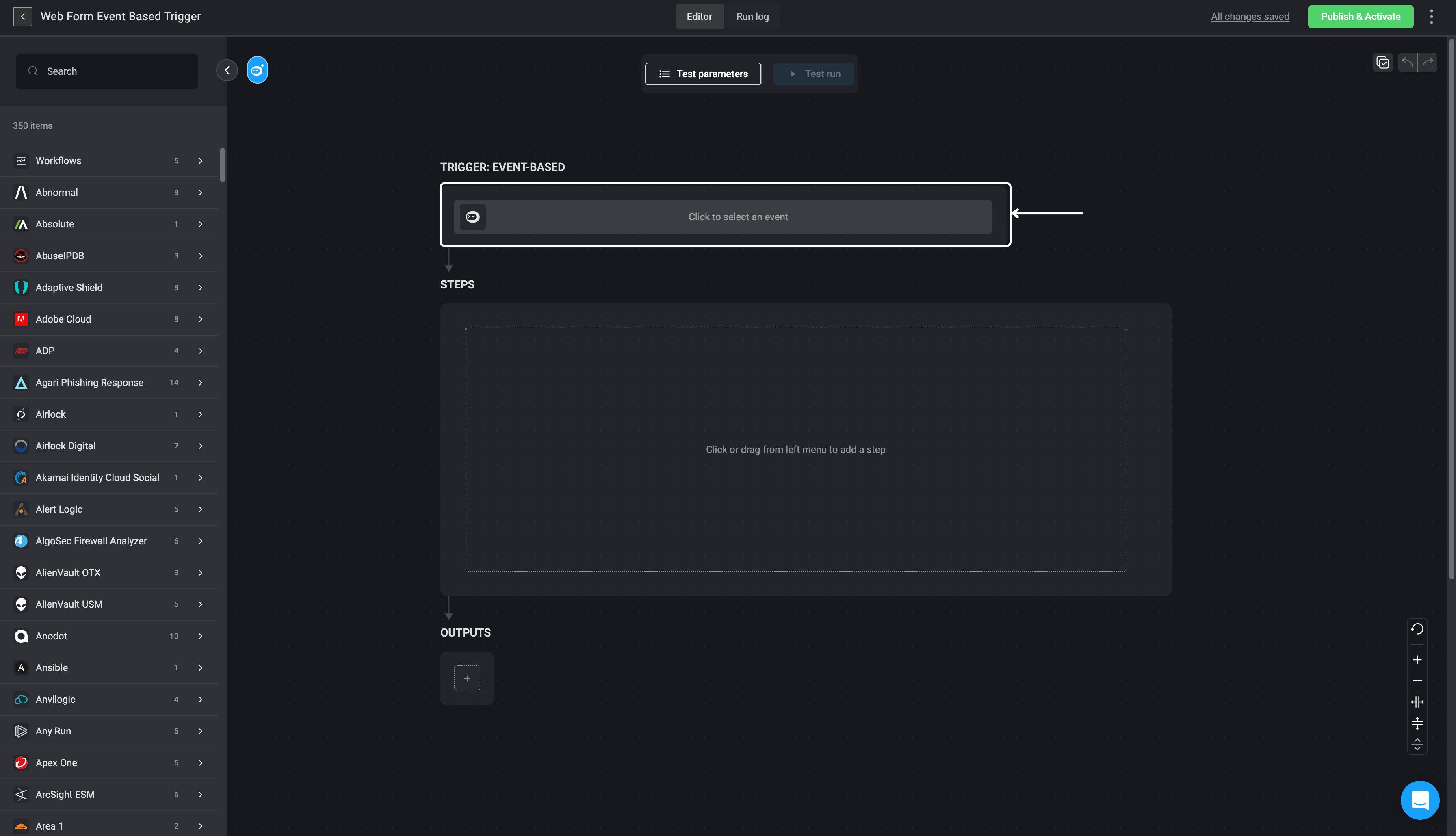
Select the 'Blink Web Form' trigger
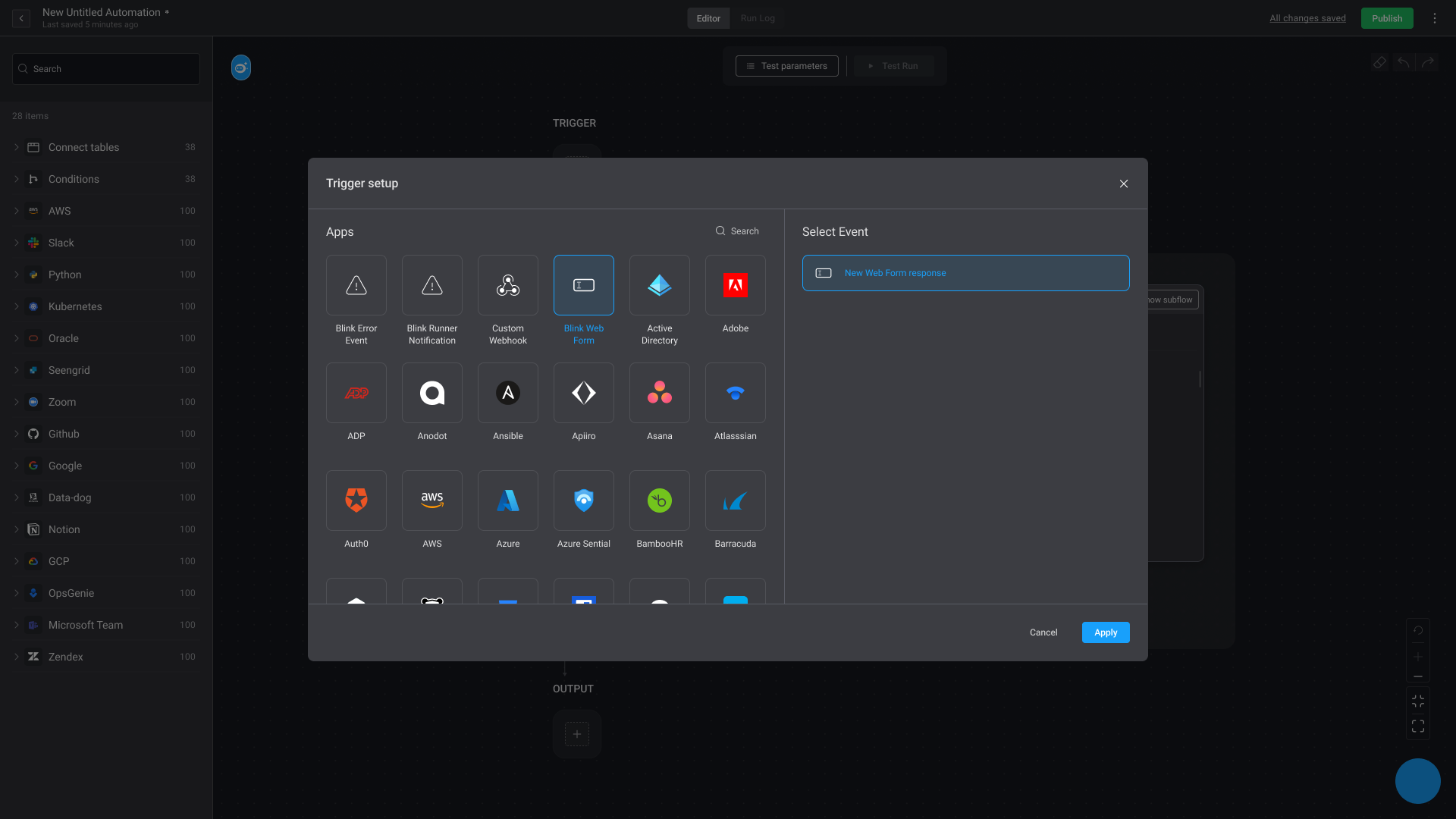
Set the web form flow Tpe as ‘Single Step’
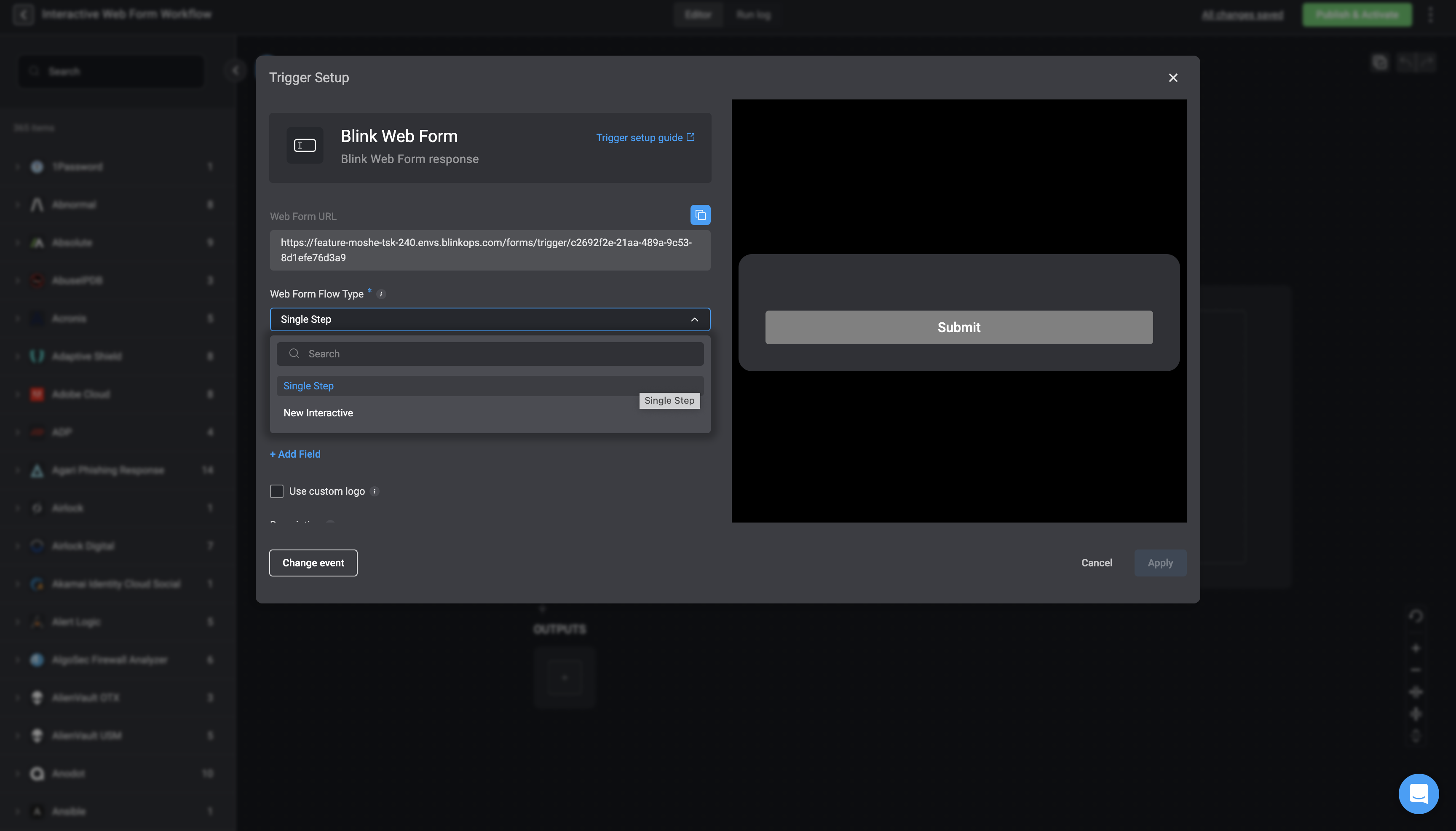
Complete the following fields:
- URL Link: Copy the link provided.
- Header: Add a title for your web form.
- Logo: (Optional) Check the box to include a custom logo and provide the image URL.
- Description: (Optional) Add a brief description.
- Input Fields: Select and add the required fields.
- Button Text: Enter the text you want displayed on the form’s submit button.
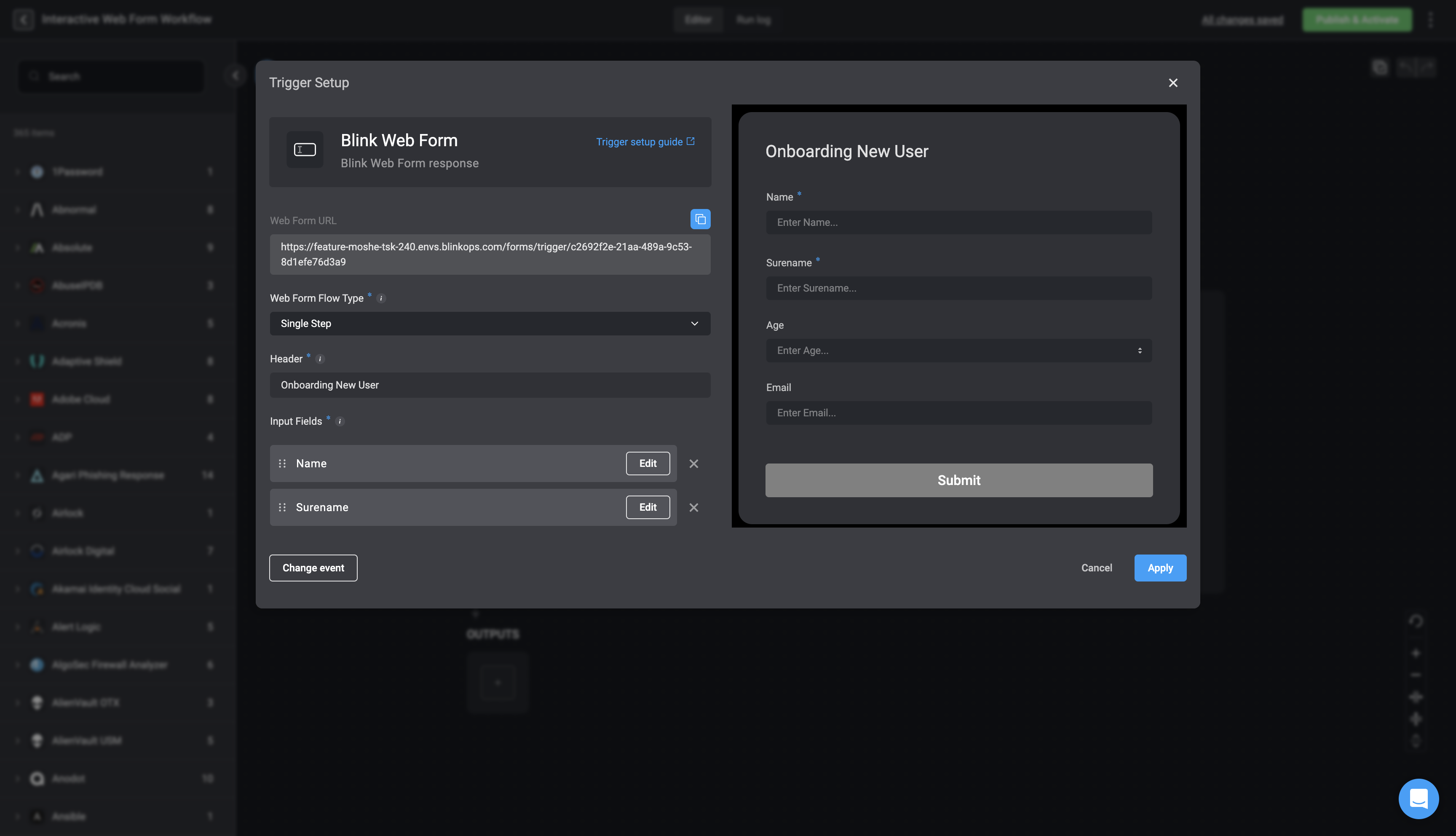
In Advanced Settings you can choose who can access and interact with the Web Form:
- Anyone in this tenant: Anyone signed into the tenant can access the form.This is the default option.
- Anyone in this workspace: Only signed-in members of the specific workspace where the web-from was created, can access the form.
- Anyone with link (public): Anyone with the form URL link can access and interact with it.
- Anyone in the organization (SSO): Blink users can access and interact with the form only via their organization’s SSO.
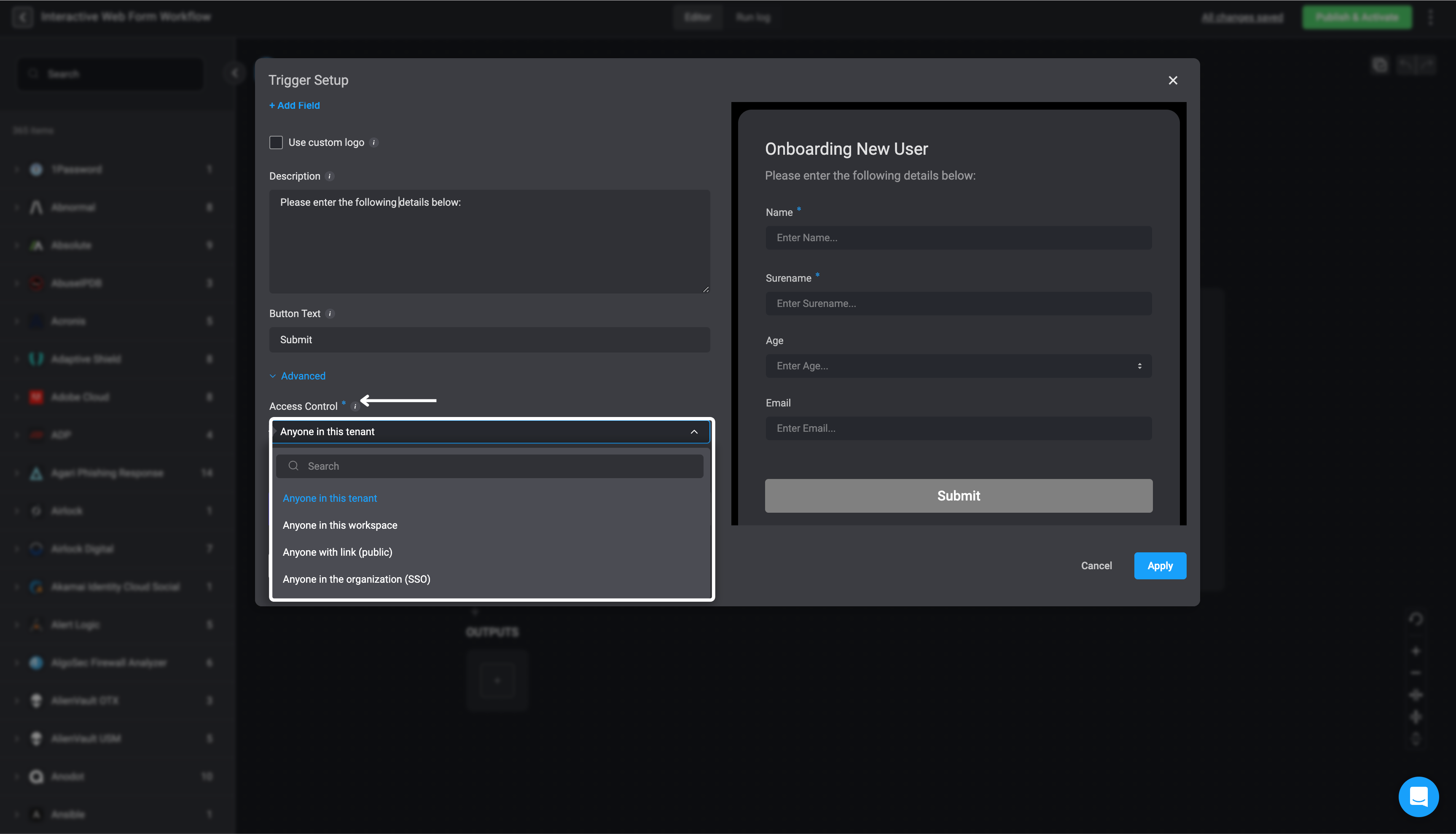
Check the box if you would like to include the metadata in the Web Form response.
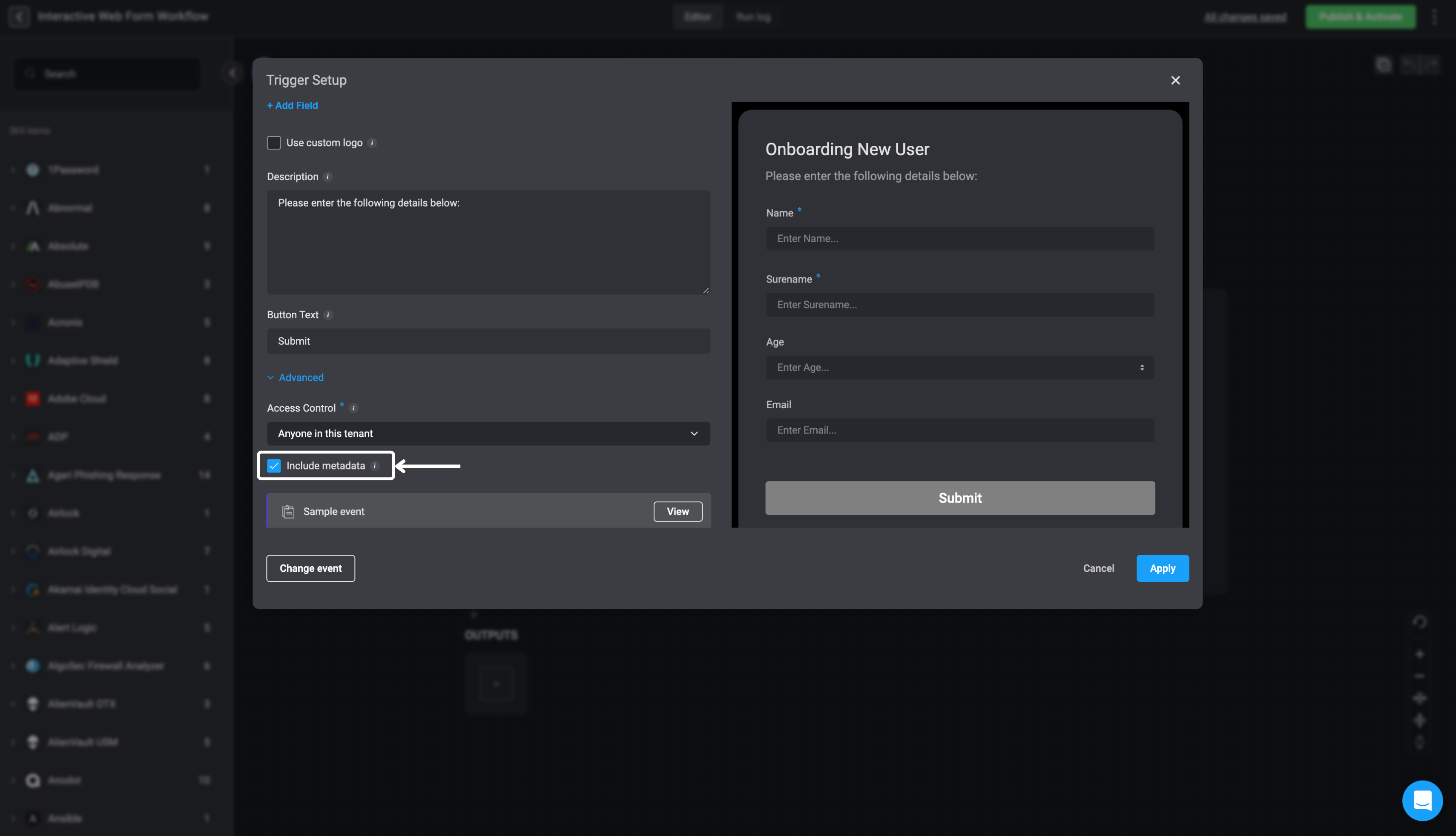
Click the 'Apply' button to save your changes
Configure an Interactive Web Form Trigger
Change the web form's flow type to 'New interactive'
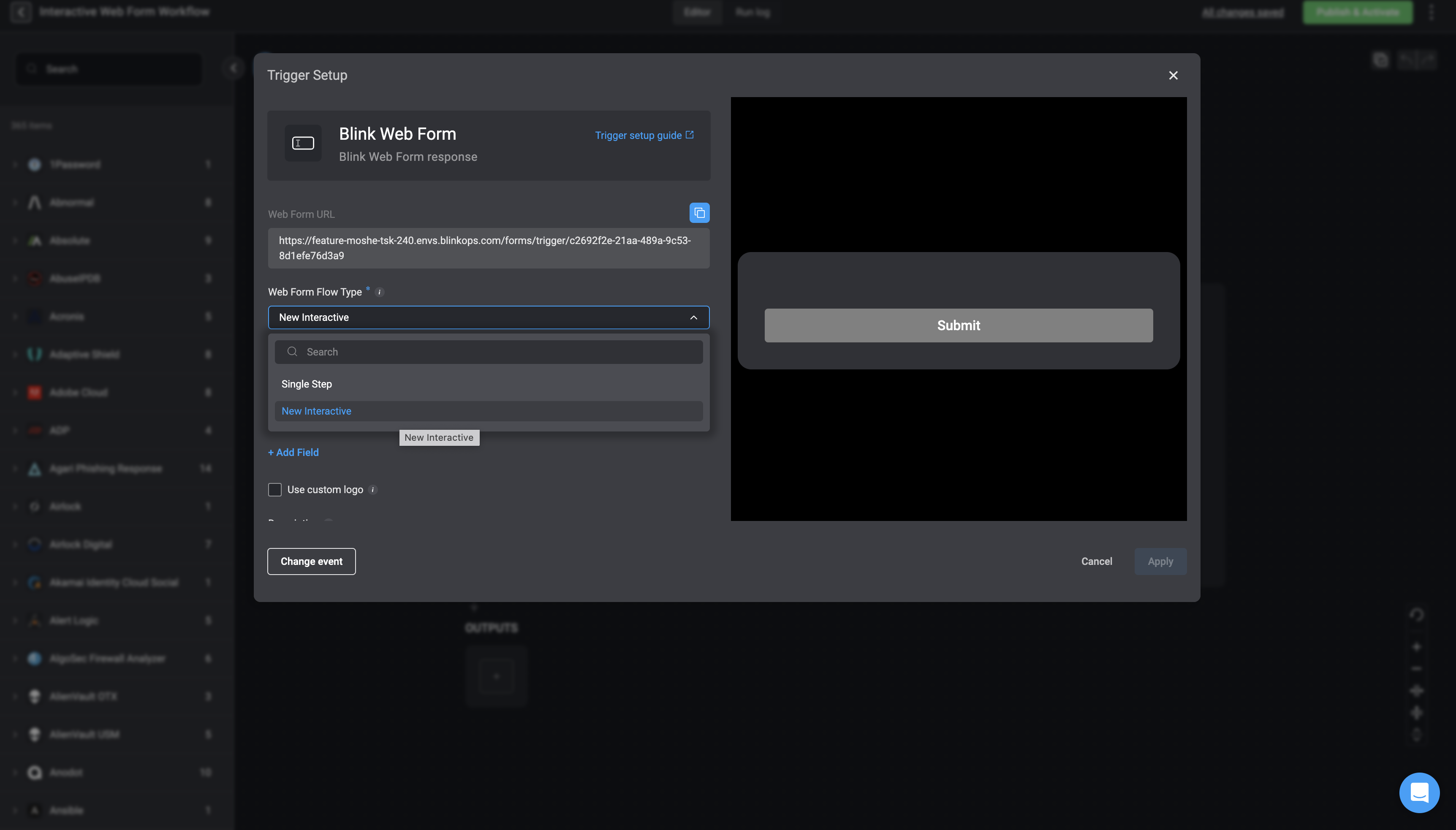
Click the 'Apply' button to save your changes and continue building your workflow.
- Add the ‘New Web Form’ action to the step
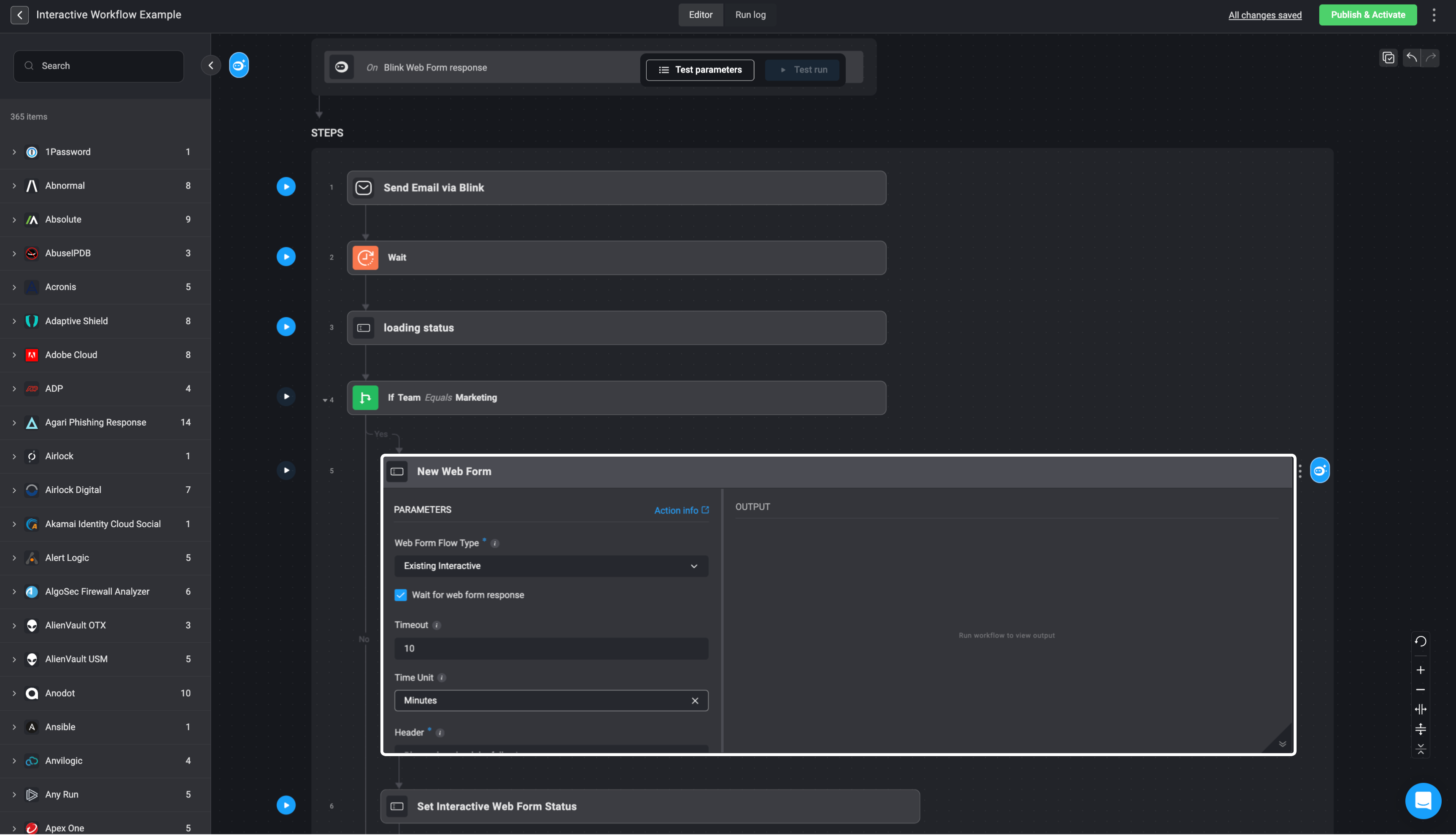
- Set Web Form Flow Type as ‘Existing Interactive’
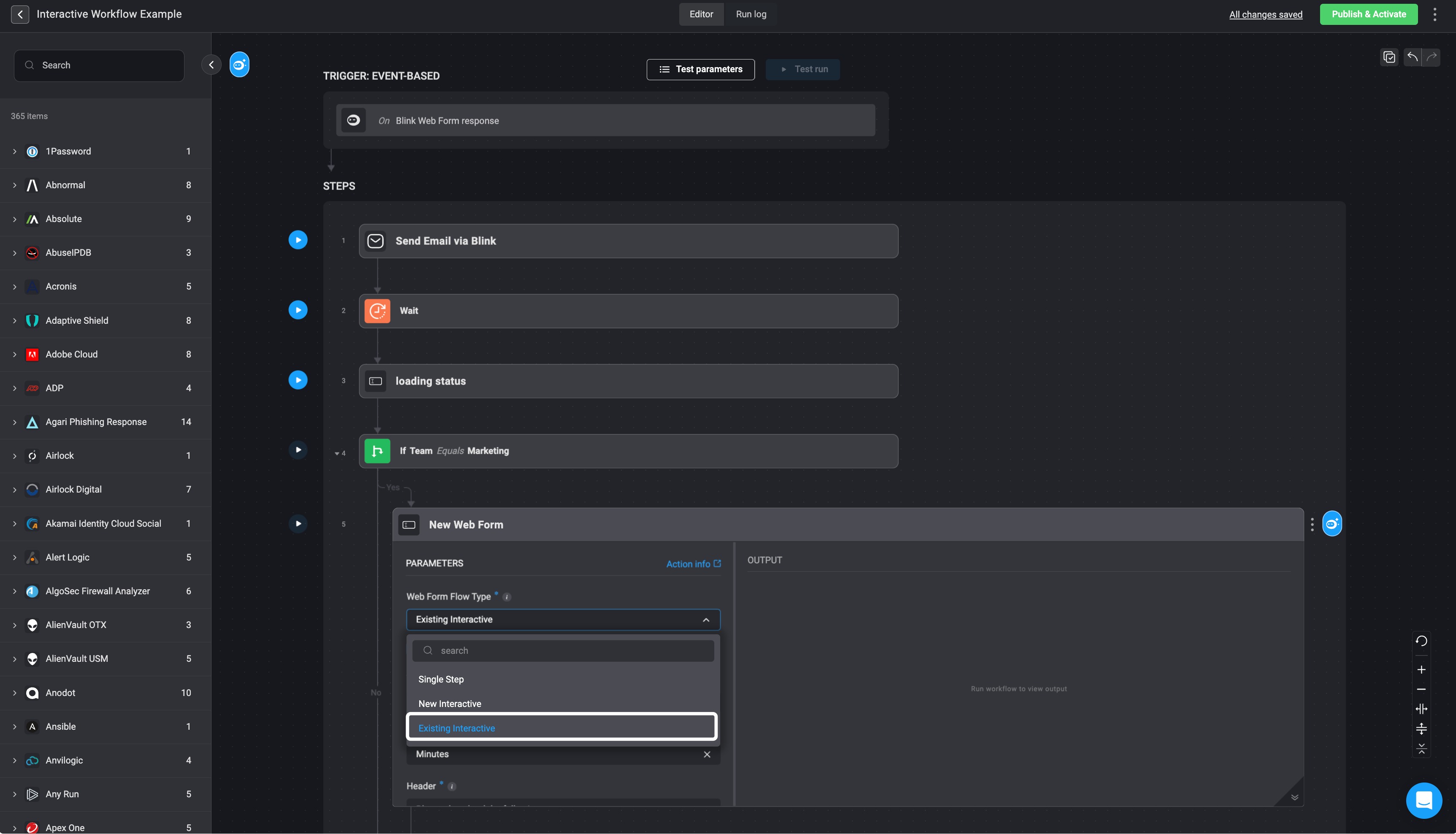
- To force the step wait for the web form response, select the ‘Wait for web form response’ checkbox. Alternatively, you can add a subsequent wait action to a step, to wait for the web form response.
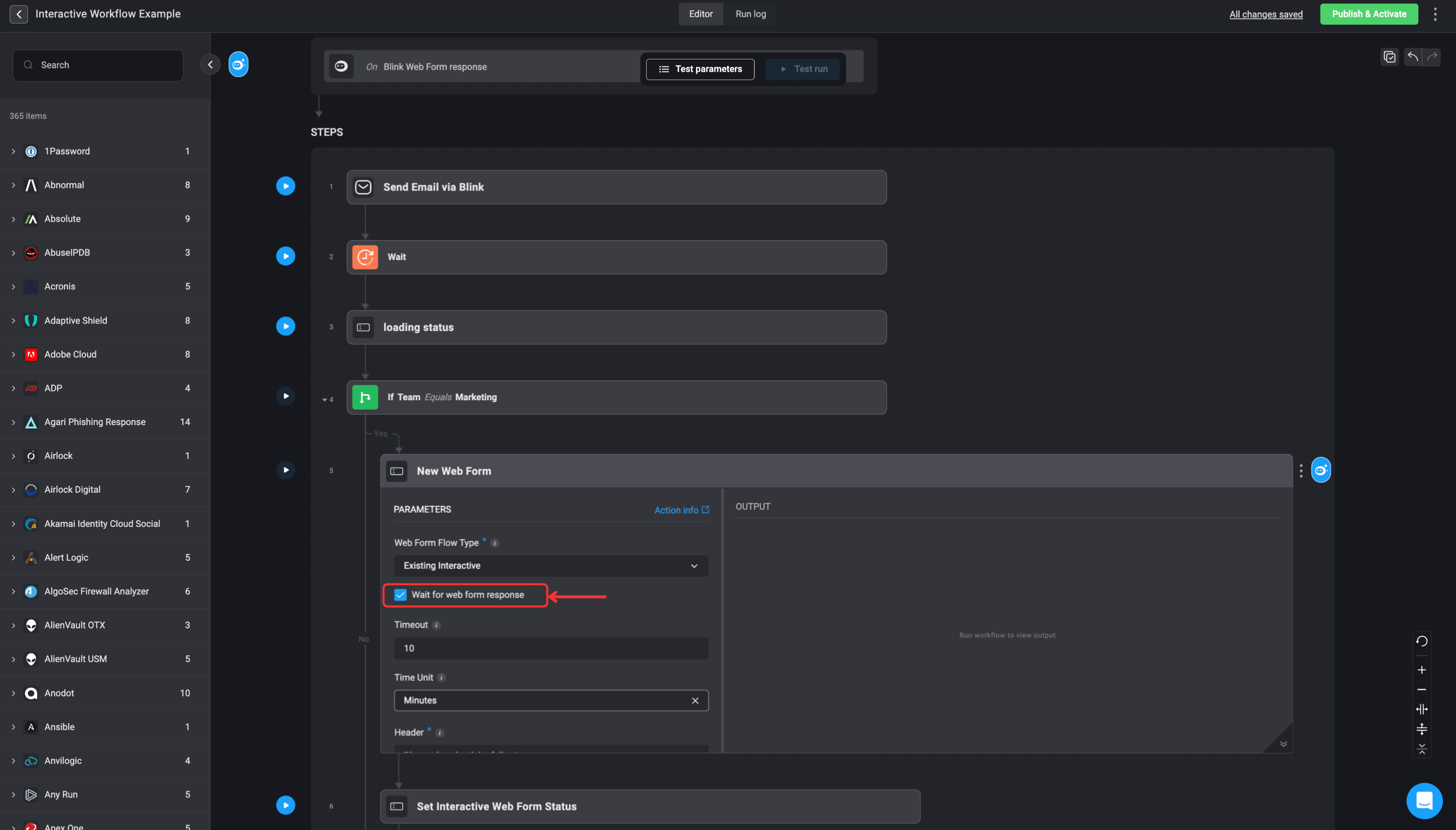
Processing Status Notification
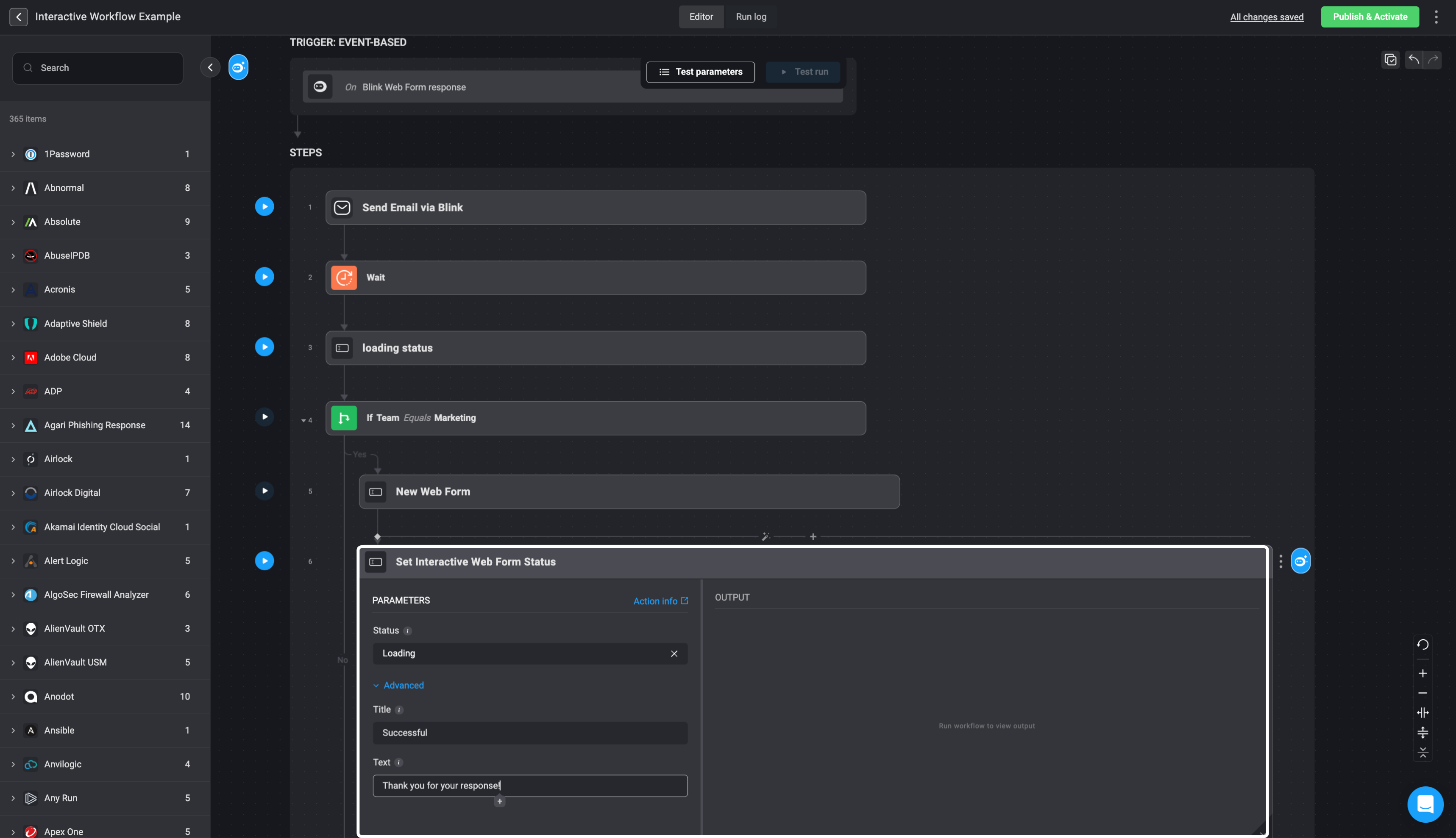
Testing Web Form Trigger
In the following use case example , we are testing a Web Form Trigger with a single step web form flow type.Test your newly created Web Form Event-Based Trigger
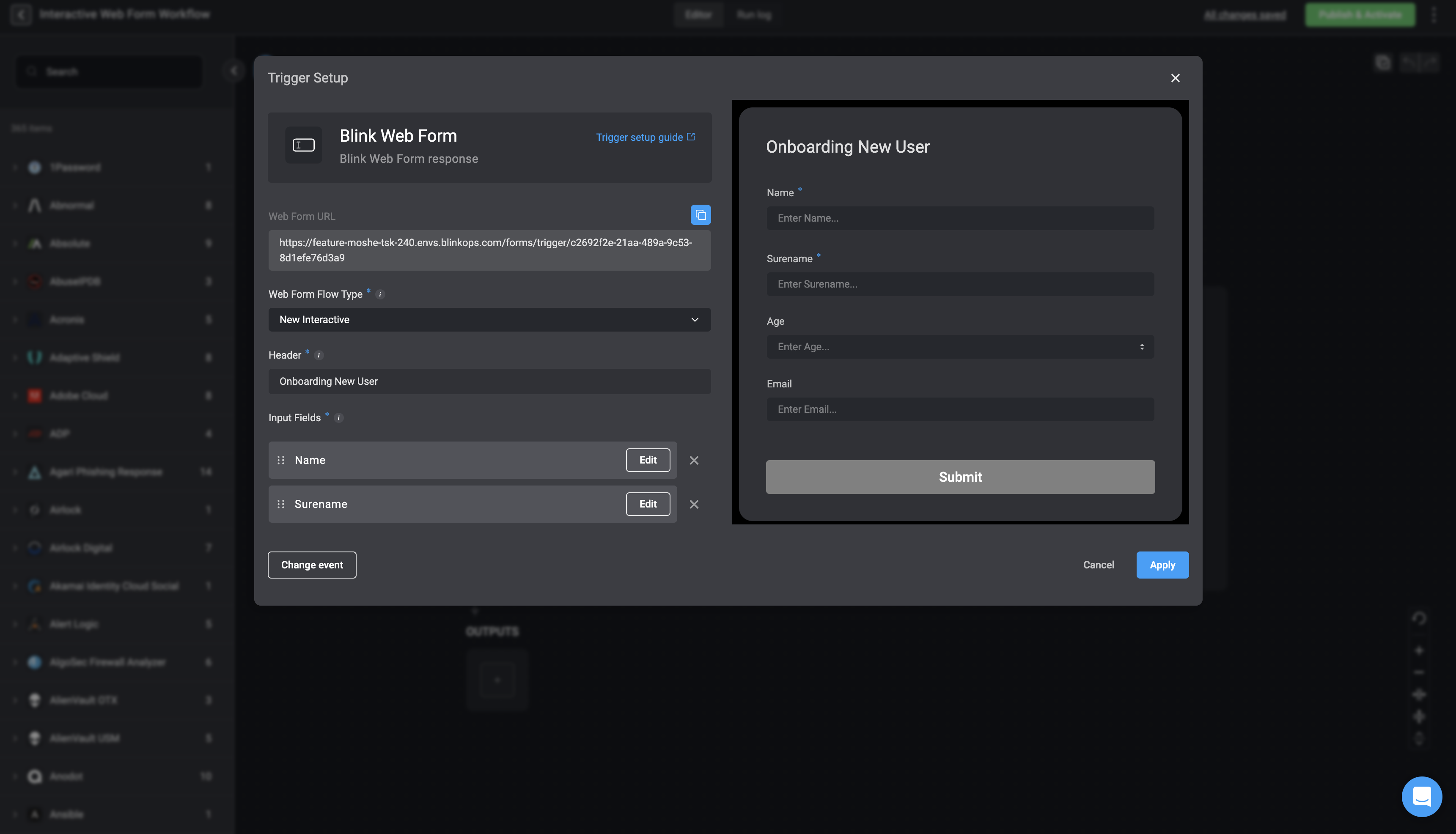
A popup window will appear
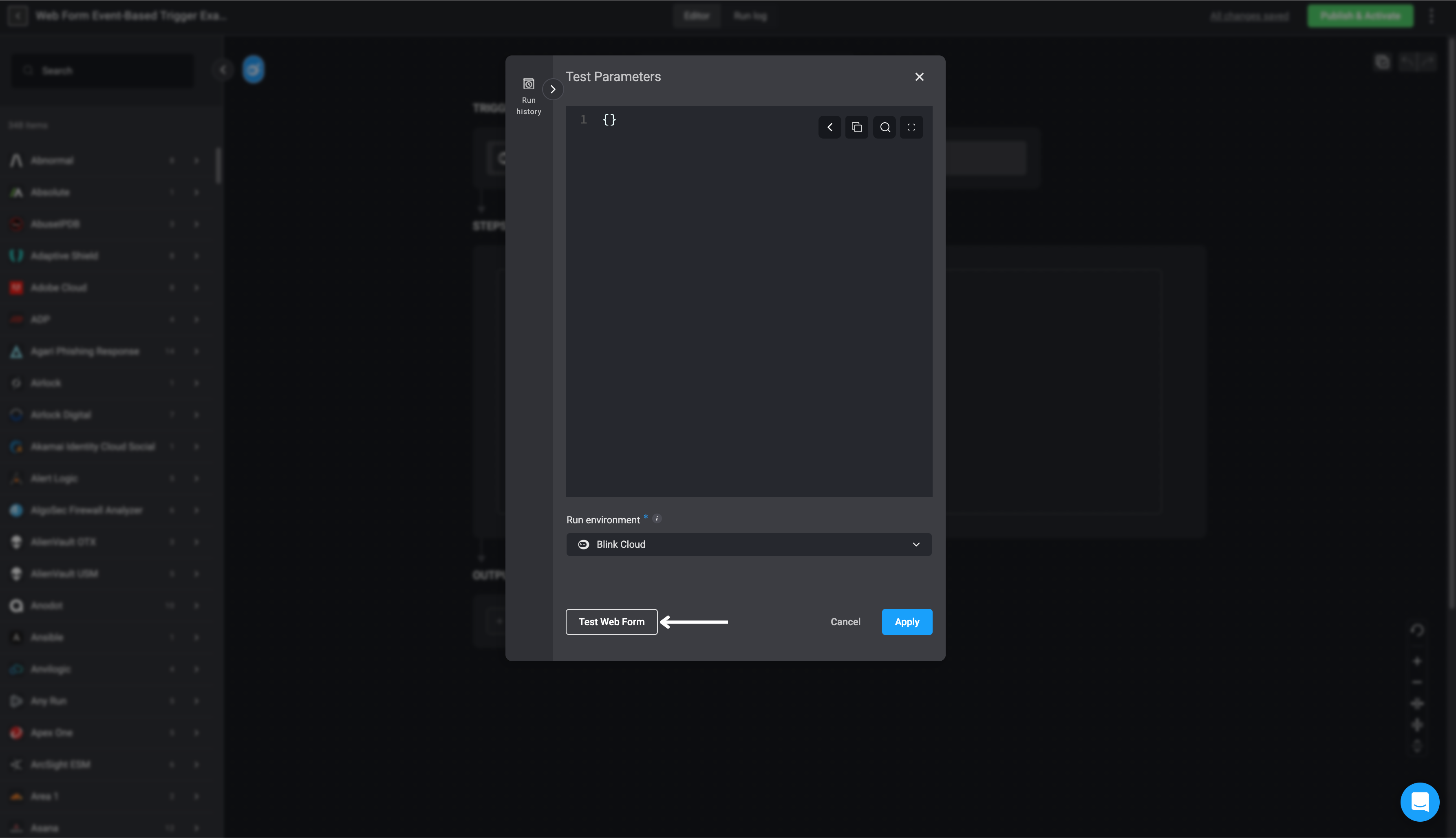
Fill out the form

Review results'
